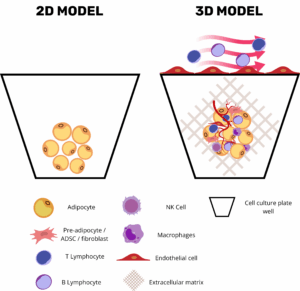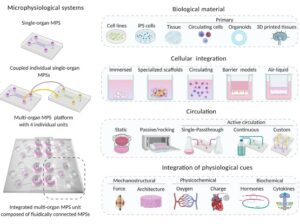Introduction
Liver microphysiological platforms for drug metabolism applications are the need of the hour to fix the exorbitant costs of drug development. Toxicology or lack of efficacy are two of the most common reasons for pharmacological failures. For a novel pharmaceutical product to reach the market, it takes an average of ten years to develop.

The pharmaceutical industry has been striving hard for efficient techniques of drug discovery. When it comes to disease modeling and drug testing, organs on a chip, a cutting-edge technology capable of simulating the physiological environment and functions of human organs on a chip, has immense potential.
Liver-on-a-chip integration into the multi-organ platforms enables to produce even more physiologically relevant models for drug toxicity assessment and evaluate off-target drug toxicity in parallel with hepatotoxicity studies thus improving the process of drug discovery.
Learn more in the paper below
How to culture vascularized & immunocompetent 3D models in a standard Multiwell
Abstract
The author states, “Drug development is a costly and lengthy process with low success rates. To improve the efficiency of drug development, there has been an increasing need in developing alternative methods able to eliminate toxic compounds early in the drug development pipeline.
Drug metabolism plays a key role in determining the efficacy of a drug and its potential side effects. Since drug metabolism occurs mainly in the liver, liver cell-based alternative engineering platforms have been growing in the last decade.
Microphysiological liver cell-based systems called liver-on-a-chip platforms can better recapitulate the environment for human liver cells in laboratory settings and have the potential to reduce the number of animal models used in drug development by predicting the response of the liver to a drug in vitro. In this review, we discuss the liver microphysiological platforms from the perspective of drug metabolism studies.
We highlight the stand-alone liver-on-a-chip platforms and multi-organ systems integrating liver-on-a-chip devices used for drug metabolism mimicry in vitro and review the state-of-the-art platforms reported in the last few years. With the development of more robust and reproducible liver cell-based microphysiological platforms, the drug development field has the potential of reducing the costs and lengths associated with currently existing drug testing methods.”
References
Kulsharova G, Kurmangaliyeva A. Liver microphysiological platforms for drug metabolism applications. Cell Prolif. 2021 Jul 22:e13099. doi: 10.1111/cpr.13099. Epub ahead of print. PMID: 34291515.
FAQ
The creation of new drugs is an expensive and time-consuming process. The success rates for new pharmaceuticals are low. On average, it takes ten years for a new product to be ready for the market. Two of the most common reasons for these failures are toxicology issues or a lack of effectiveness. To improve the efficiency of this process, there has been a growing requirement for alternative methods. These new methods are needed to identify and remove toxic compounds at an early stage in the development workflow. The pharmaceutical sector has been searching for efficient techniques to aid in drug discovery. It is believed that more robust and reproducible platforms could help reduce the costs and time associated with current testing methods.
Liver-on-a-chip platforms are a type of microphysiological system based on liver cells. These are engineered systems that can better reproduce the environment for human liver cells in a laboratory. They are considered a new technology for disease modelling and drug testing. The platforms are capable of simulating the physiological environment and functions of the human organ on a small chip. These systems have been growing in number over the last decade. This is because drug metabolism, which is a key factor in a drug’s efficacy and side effects, happens mainly in the liver. These platforms are being developed as an alternative method for drug development.
Liver microphysiological platforms are needed to help fix the high costs of drug development. They have the ability to predict the response of the liver to a drug in vitro. This capability could reduce the number of animal models used in drug development. The platforms are intended to help eliminate toxic compounds early in the drug pipeline. This would improve the overall efficiency of drug creation. More robust and reproducible liver cell-based systems are being developed. The adoption of these platforms could lead to a reduction in the costs and long timeframes linked to the drug testing methods that are currently used.
The integration of liver-on-a-chip devices into multi-organ platforms is one application. This combination allows for the production of models that are even more relevant to human physiology. These more complex models can be used for drug toxicity assessment. A specific benefit is the ability to evaluate off-target drug toxicity. This can be done at the same time as hepatotoxicity (liver toxicity) studies. This parallel evaluation helps to improve the drug discovery process. Multi-organ systems that include liver devices are used for drug metabolism mimicry in vitro. Recent state-of-the-art platforms have been reported that use this approach.




